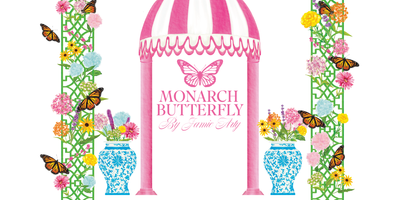
Swamp Milkweed
- Free worldwide shipping
- In stock, ready to ship
- Inventory on the way
ABOUT YOUR SEED:
Life Cycle: Perennial
Sow: Swamp Milkweed seeds can be sown in the spring or fall, depending on your local climate. You can start seeds indoors 6-8 weeks before the last frost date in your area or sow them directly in the garden. When planting seeds directly outdoors, do so in late fall or early spring.
USDA Zones: Swamp Milkweed (Asclepias incarnata) 2-11
US Regions: Swamp Milkweed can be found in a variety of regions across the United States, particularly in the central and eastern parts of the country.
Stratification: While Swamp Milkweed seeds do not typically require stratification, you can cold-stratify the seeds if desired. To do so, place the seeds in a moist medium and refrigerate them for several weeks before planting. This can help improve germination rates.
Germination Ease: Moderate. Swamp Milkweed seeds can germinate without stratification, but cold treatment can enhance germination rates, especially for certain varieties.
Sunlight: Swamp Milkweed generally prefers full sun but can tolerate some light shade, particularly in hot climates.
Height: Swamp Milkweed typically reaches a height of 3 to 5 feet (approximately 0.9 to 1.5 meters), depending on growing conditions and variety.
Color: The flowers of Swamp Milkweed are typically a lovely shade of pink, creating an attractive appearance.
Bloom Season: Swamp Milkweed usually blooms in mid to late summer, producing clusters of pink flowers. It is a valuable nectar source for pollinators during this time.
Uses: Swamp Milkweed is an important native plant for wildlife gardens and pollinator habitats. It serves as a host plant for monarch butterflies and provides nectar for other pollinators. It's often grown in rain gardens and wetland areas, and its striking pink flowers add beauty to the landscape.
Description: Swamp Milkweed (Asclepias incarnata) is a captivating perennial plant that plays a vital role in supporting pollinators, especially monarch butterflies. This native plant features clusters of stunning pink flowers that attract a variety of pollinators during its mid to late summer blooming season.
Swamp Milkweed is well-suited to a range of USDA Zones and can be found in different regions across the United States, particularly in the central and eastern parts of the country. It prefers full sun but can tolerate light shade, making it adaptable to various growing conditions.
In addition to its ornamental appeal, Swamp Milkweed is an essential addition to wildlife gardens and pollinator habitats. Monarch butterfly caterpillars depend on it as a host plant, and its nectar-rich blooms provide sustenance for a wide array of pollinators. This perennial is often used in rain gardens and wetland areas, where it thrives in moist soil conditions. The graceful and vibrant presence of Swamp Milkweed enhances the beauty of any landscape while contributing to the conservation of pollinators and the environment.


